 March 7, 2019 John E. Ross, KD8IDJ, Editor
| ||||||
Demand is High as New ARRL Introduction to Emergency Communications Courses Open The ARRL Lifelong Learning Department has launched a revised and updated Introduction to Emergency Communications (EC-001) course, and demand to sign up is prompting the recruitment of additional course mentors to expand the schedule. Registration just opened for the first of four EC-001 online sessions, which will run from Monday, April 1, until Friday, May 31.
The new EC-001 course has been beta-tested by course mentors and transferred into a new online learning platform. With the closing last year of the Connecticut Distance Learning Consortium (CTDLC), EC-001 lost its virtual home and was taken offline. At that point, the ARRL Emergency Preparedness and Lifelong Learning teams started exploring short- and long-term alternatives to offer the course. After careful evaluation and review, a decision was made to move the course to a more modern learning management system called Canvas, which will be used while the new Lifelong Learning Initiative program is under development. EC-001 will eventually become a part of a comprehensive online learning environment. EC-001 is designed to provide basic knowledge and tools for emergency communications volunteers. With the online format, students can access the course at anytime from anywhere. "We're very excited to be able to offer Introduction to Emergency Communications EC-001 once again," Bickell said. "The Emergency Preparedness staff here has been incredibly helpful as we've worked together to get the course back up and running. Input from previous EC-001 mentors has been an invaluable part of the testing phase. The timing is right to put the course back online."
EC-001 is designed to provide basic knowledge and tools for emergency communications volunteers. With the online format, students can access the course at anytime from anywhere during the 9-week period and may work at their own pace and on their own schedule. As in the past, students will be able to register and take the course entirely online. The Canvas platform is also mobile-responsive, meaning that students can view the course materials, interact with fellow students, and complete assignments from any mobile device. Individual EC-001 sessions will serve up to 30 students, supported by an experienced mentor. Courses are free of charge. To be eligible, students must meet certain prerequisites, listed on the registration page. The registration page includes the entire 2019 schedule of EC-001 sessions.
New ARRL Podcast Geared Toward Newcomers to Amateur Radio Debuts Today A new ARRL podcast aimed newcomers to Amateur Radio will launch on Thursday, March 7. Called, "So Now What?," the podcast will alternate new-episode weeks with the "ARRL The Doctor is In" podcast. "So Now What?" will focus on answering questions and providing support and encouragement for new licensees to get the most out of the hobby. Co-hosting "So Now What?" will be ARRL Communications Content Producer Michelle Patnode, W3MVP, and W1AW Station Manager Joe Carcia, NJ1Q. The podcast will explore questions that newer hams may have and the issues that keep newcomers from remaining active.
"So Now What?" will be sponsored by LDG Electronics. Topics to be discussed in the first several episodes include getting started, operating modes available to Technician licensees, VEC and licensing issues, sunspots and propagation, mobile operating, contesting, Amateur Radio in pop culture, and perceptions of Technician license holders. As with "ARRL The Doctor is In," listeners will be able to find "So Now What?" on Apple iTunes, Blubrry, or Stitcher (free registration required, or browse the site as a guest) and through the free Stitcher app for iOS, Kindle, or Android devices...or wherever you get your podcasts. Episodes will also be archived on the ARRL website. GPS Network May Experience Errors in "Week Number" Rollback The GPS network will encounter a small millennium bug of its own in April when the network's "week number" rolls back to zero. This known issue especially could affect those who use GPS to obtain accurate Coordinated Universal Time (i.e., UTC). In the GPS network, the number of the current week is encoded into the message the GPS receives using a 10-bit field. This This should not affect later-model GPS receivers that conform to IS-GPS-200 and provide UTC, but testing carried out by the US Department for Homeland Security (DHS) raised the possibility that some units may misinterpret the rollover, shifting the date back to January 6, 1980, or possibly to another incorrect date. An affected GPS not only may report the incorrect date, but time accuracy that is critical to precise location data could be compromised. A nanosecond error in GPS time can equate to 1 foot of position (ranging) error, according to DHS-published guidelines that explain the issue and suggest how to address it. The Doctor Will See You Now! "Meet the Raspberry Pi" is the topic of the current (February 28) episode of the "ARRL The Doctor is In" podcast. Listen...and learn!
Every 2 weeks, your host, QST Editor-in-Chief Steve Ford, WB8IMY, and the Doctor himself, Joel Hallas, W1ZR, will discuss a broad range of technical topics. You can also email your questions to doctor@arrl.org, and the Doctor may answer them in a future podcast. Enjoy "ARRL The Doctor is In" on Apple iTunes, or by using your iPhone or iPad podcast app (just search for "ARRL The Doctor is In"). You can also listen online at Blubrry, or at Stitcher (free registration required, or browse the site as a guest) and through the free Stitcher app for iOS, Kindle, or Android devices. If you've never listened to a podcast before, download our beginner's guide. Technical Paper Raises Visibility of Wireless Power Transmission Interference Potential A technical paper drafted by International Amateur Radio Union Region 1 (IARU-R1) President Don Beattie, G3BJ, is the latest official step to increase the visibility of wireless power transmission (WPT) systems' interference threat to Amateur Radio. Submitted to the IARU-R1 Interim Meeting, set for April 27 - 28 in Vienna, the paper will update relevant committees on the topic. Beattie's paper offers an impact analysis of WPT-electric vehicle (WPT-EV) systems on Amateur Radio communications, with a primary focus on WPT systems operating in the 79 - 90 kHz range.
Beattie's paper warns of "a widespread and serious impact on radio communications operating in the vicinity" of WPT systems if spurious emissions measured at a distance of 10 meters are at current CEPT Recommendation 74-01E and ITU Radiocommunication Sector Recommendation SM.329-12 limits, "given the planned density of WPT-Electric Vehicle Systems." Both the CEPT and ITU recommendations address "unwanted emissions in the spurious domain." An IARU study of WPT-EV and its potential impact on radiocommunications services already has been submitted to the relevant ITU and CEPT study committees. Broadcasters, land mobile services, and others have also expressed concern about spurious WPT-EV emissions. The study stops short of proposing any regulatory action. "This, therefore, is the next challenge -- to seek to bridge the divide between WPT manufacturers and the radiocommunications services," the paper concluded. Read more. Just Ahead in Radiosport
See the ARRL Contest Calendar for more information. For in-depth reporting on Amateur Radio contesting, subscribe to The ARRL Contest Update via your ARRL member profile email preferences. The K7RA Solar Update Tad Cook, K7RA, Seattle, reports: After no sunspots in February, sunspot group 2734 appeared on March 5. The new sunspot numbers are 14 and 17. I believe this was the longest consecutive period (33 days) with no sunspots on this declining side of Cycle 24. The polarity of the new sunspot group identifies it as being from Cycle 24, not Cycle 25. Frank Donovan, W3LPL, shared a report from the Royal Observatory in Belgium indicating brief sunspot appearances on February 13 and 21, but numbers from NOAA do not show these.
Average daily planetary A index rose from 4.9 to 12.6, and average mid-latitude A index increased from 3.9 to 9.7, both higher due to the effects of a solar wind stream on February 28 and March 1. Predicted solar flux is 73 on March 7 - 9; 72 on March 10 - 13; 71 on March 14, and 70 on March 15 - April 20. Predicted planetary A index is 10, 12, 10 and 8 on March 7 - 10; 5 on March 11 - 19; 10 on March 20; 5 on March 21 - 25; 12, 30, 28, 14, 8, and 10 on March 26 - 31; 8, 5, 10, 15, 12, 12, and 8 on April 1 - 7, and 5 on April 8 - 20. Sunspot numbers for February 28 - March 6 were 0, 0, 0, 0, 0, 14, and 17, with a mean of 4.4. The 10.7-centimeter flux was 70.1, 69.9, 69.4, 69.5, 70.9, 72, and 72.5, with a mean of 70.6. Estimated planetary A indices were 26, 24, 12, 6, 7, 5, and 8, with a mean of 12.6. Estimated mid-latitude A indices were 17, 18, 9, 6, 7, 4, and 7, with a mean of 9.7. A comprehensive K7RA Solar Update is posted Fridays on the ARRL website. For more information concerning radio propagation, visit the ARRL Technical Information Service, read "What the Numbers Mean...," and check out K9LA's Propagation Page. A propagation bulletin archive is available. Monthly charts offer propagation projections between the US and a dozen DX locations. Share your reports and observations. ARISS to Auction HF/50 MHz Transceiver, ARRL Handbook Boxed Set The US Amateur Radio on the International Space Station (ARISS) team will auction a new Kenwood TS-890S transceiver and a six-volume 2019 ARRL Handbook boxed set -- both donated items made unique by bearing the signatures of US astronauts. Bidding will begin on April 8 at 1200 UTC and conclude on April 14 at 2200 UTC. Next month's fundraiser auction will mark the first for ARISS.
"Auction proceeds will help ARISS to launch its new custom-built, higher-power radio system in 2019 that will offer a voice repeater as well as improved packet, APRS, and SSTV capability for more ham operators to enjoy," ARRL ARISS-US Delegate Rosalie White, K1STO, said. "The next-generation system will carry on the ARISS mission of introducing Amateur Radio to thousands of students, educators, and community members, in the process inspiring youngsters in the fields of science, technology, engineering, and math." White pointed out that ARISS also serves a lot of individual radio amateurs, in addition to the program's positive impact by supporting school and group contacts with ISS crew members. She said some 10,000 SSTV images transmitted in February were downloaded from the ISS via Amateur Radio, and approximately 89,000 hams took advantage of the ARISS packet system during 2018.
A 100 W HF/50 MHz transceiver, the TS-890S features a high-speed independent band scope, noise reduction, a 7-inch TFT color display, a built-in antenna tuner, and CW, PSK, and RTTY encoding and decoding capabilities. "We thank Kenwood and ARRL for their generous support and invite those who don't 'do' auctions to donate toward the launch of the new ARISS space-bound radio system," White said. More auction details will soon be posted on the ARISS website. Winning bidders will be responsible for the costs of shipping, handling, any required customs paperwork. FCC Takes a New Tack in Combatting Unlicensed Radio Broadcasting In what may be a first in the effort to crack down on unlicensed broadcasters, the United States has filed a civil action to stop a church-related pirate radio station from operating in Worcester, Massachusetts. The Massachusetts US Attorney's Office is seeking an injunction to shut down the station, operating on 97.1 MHz.
The FCC already has fined operator Vasco Oburoni and Christian Praise International Church $15,000 for repeated violations of its rules against unlicensed operation. The complaint recounts that Oburoni and the church first began operating an unlicensed station in Worcester on 102.3 MHz. After issuing multiple warnings, the FCC levied the $15,000 penalty, and Oburoni agreed to a payment plan. But later, he began broadcasting again, this time on 97.1 MHz. At least one licensed broadcaster has complained to the FCC, citing interference concerns. NASA Science Live Program Takes Viewers Behind the Scenes NASA has premiered a new monthly television series that offers viewers a behind-the-scenes look at how the space agency explores Earth and outer space. NASA Science Live airs on NASA Television as well as on Facebook Watch, YouTube, and Ustream. Viewers will be able to submit questions on social media using the hashtag #askNASA or by leaving a comment in the chat section on Facebook. "I am The first episode, "To the Moon, and Beyond," debuted on February 27 (episodes are archived). It explores how science conducted on the lunar surface in the past informs current missions. Episodes run about 30 minutes. The second episode, "Going Interstellar," will be go live on March 27 at 2300 UTC. Some Stormy Seas for Competitive Sailors Using HF Amateur Radio The sorts of rules regulating the degree of outside assistance allowed in ham radio contesting also apply in other endeavors. An Estonian skipper was recently penalized in the Golden Globe Race (GGR) after seeking "weather routing" -- the best route according to wind and weather conditions -- via ham radio. Third-place skipper Uku Randmaa, ES1UKU, escaped disqualification from the round-the-world race, however, getting a 72-hour penalty instead. After encountering a storm, he was not expected to finish until this weekend .
Race rules say, "Entrants are free to speak to media, family, friends, and sponsors by radio at any time during the event, but must not be given any form of weather routing." The approximately 30,000-mile GGR solo circumnavigation starts and ends in Les Sables-d'Olonne, France.
"This is a retro race with skippers restricted to using a sextant, paper charts, and wind-up chronometers, just as Sir Robin Knox-Johnston used in the first Sunday Times Golden Globe Race 50 years ago," Race Chairman Don McIntyre explained to My Sailing magazine. Skippers can only communicate by marine and/or amateur SSB HF radios and on an Amateur Radio net. Meanwhile, according to a January report, some GGR sailors operating on Amateur Radio frequencies using phony call signs were asked to stop. Second-place skipper Mark Slats -- who was reported to have been using PI3MS -- said on January 15 he was considering getting out of competitive sailing, citing safety concerns, after being banned from the ham radio net for being unlicensed. The GGR 2018 - 2019 winner, Jean Luc Van Den Heede, who finished on January 29, had been using J6LJV, and that call sign appears under his name on QRZ.com, although authorities in St. Lucia are reported to have said they have no record of his license. Read more. In Brief...
â¦â¦â¦
â¦â¦â¦
Upcoming ARRL Section, State, and Division Conventions
Find conventions and hamfests in your area. See the ARRL Contest Calendar for more information. For in-depth reporting on Amateur Radio contesting, subscribe to The ARRL Contest Update via your ARRL member profile email preferences.
. .
Subscribe to...
Free of charge to ARRL members...
| ||||||
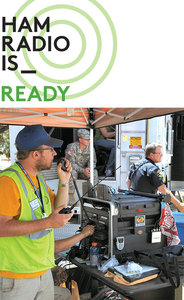 "The demand for this course has exceeded our projections, and the four sessions scheduled for 2019 are already filling quickly," ARRL Lifelong Learning Manager Kris Bickell, K1BIC, said. "This course is designed to be interactive with mentors guiding each session, so we're seeking additional mentors and will schedule more course sessions as quickly as possible. Thanks for your patience as we expand capacity for this updated version of EC-001." Bickell is developing a notification list to alert those who didn't get into the first round of courses when a new round of sessions becomes available.
"The demand for this course has exceeded our projections, and the four sessions scheduled for 2019 are already filling quickly," ARRL Lifelong Learning Manager Kris Bickell, K1BIC, said. "This course is designed to be interactive with mentors guiding each session, so we're seeking additional mentors and will schedule more course sessions as quickly as possible. Thanks for your patience as we expand capacity for this updated version of EC-001." Bickell is developing a notification list to alert those who didn't get into the first round of courses when a new round of sessions becomes available.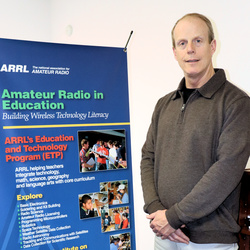
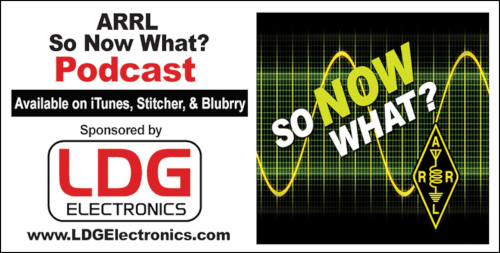
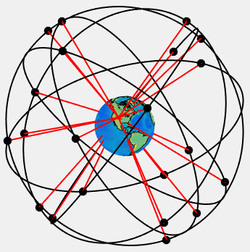 allows for weeks ranging from zero to 1023. The current period began on August 1, 1999. On April 6, 2019, the week number rolls over to zero and starts counting back up to 1023.
allows for weeks ranging from zero to 1023. The current period began on August 1, 1999. On April 6, 2019, the week number rolls over to zero and starts counting back up to 1023. Sponsored by
Sponsored by 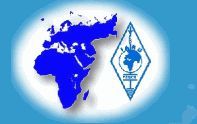 "IARU engaged with discussions in
"IARU engaged with discussions in 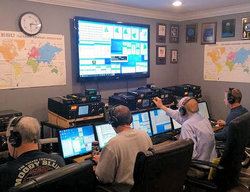 March 9 - 10 -- Stew Perry Topband Challenge (CW)
March 9 - 10 -- Stew Perry Topband Challenge (CW)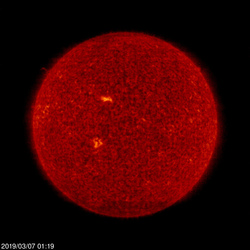 Average daily sunspot numbers this past week increased from 0 to 4.4, compared to the previous 7 days. Average daily solar flux was unchanged at 70.6
Average daily sunspot numbers this past week increased from 0 to 4.4, compared to the previous 7 days. Average daily solar flux was unchanged at 70.6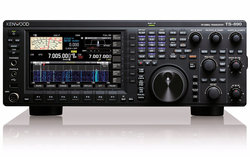
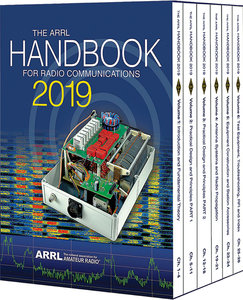 The full-featured TS-890S came on the US market just last year. A long-time ARISS supporter, JVC Kenwood came up with the idea to offer the astronaut-signed transceiver as an exclusive item that just one radio amateur could own.
The full-featured TS-890S came on the US market just last year. A long-time ARISS supporter, JVC Kenwood came up with the idea to offer the astronaut-signed transceiver as an exclusive item that just one radio amateur could own..jpg) "This groundbreaking step, for an injunction to stop a pirate radio operator's illegal activities, is part of our continued efforts to combat illegal broadcasting," FCC Enforcement Bureau Chief Rosemary Harold said this week. "As we work with our law enforcement colleagues to use every tool in our toolbox to combat pirate radio, I welcome the Justice Department's renewed use of its Section 401(a) injunction authority. Along with fines, equipment seizures, and warnings, this action underlines our continued interest in combatting this serious problem."
"This groundbreaking step, for an injunction to stop a pirate radio operator's illegal activities, is part of our continued efforts to combat illegal broadcasting," FCC Enforcement Bureau Chief Rosemary Harold said this week. "As we work with our law enforcement colleagues to use every tool in our toolbox to combat pirate radio, I welcome the Justice Department's renewed use of its Section 401(a) injunction authority. Along with fines, equipment seizures, and warnings, this action underlines our continued interest in combatting this serious problem."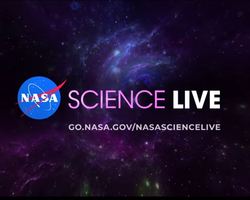 personally very excited about how this new show will highlight the interconnected nature of science from across the agency," said Thomas Zurbuchen, the associate administrator for NASA's Science Mission Directorate. "The series will find new ways to talk about science from various disciplines, missions, and centers to show how each works together in order to achieve our exploration goals."
personally very excited about how this new show will highlight the interconnected nature of science from across the agency," said Thomas Zurbuchen, the associate administrator for NASA's Science Mission Directorate. "The series will find new ways to talk about science from various disciplines, missions, and centers to show how each works together in order to achieve our exploration goals."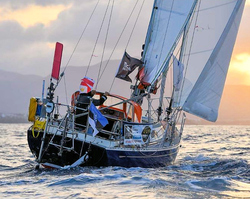 In a recording of the conversation provided to race headquarters, Randmaa asks, "I'm heading 90°. Can I be sure that I can take the wind, if I'm sailing east?" The other station, VP8LP, advises him to move northwest and later tells Randmaa, "The more north you go, the quicker you get out of the wind hole."
In a recording of the conversation provided to race headquarters, Randmaa asks, "I'm heading 90°. Can I be sure that I can take the wind, if I'm sailing east?" The other station, VP8LP, advises him to move northwest and later tells Randmaa, "The more north you go, the quicker you get out of the wind hole."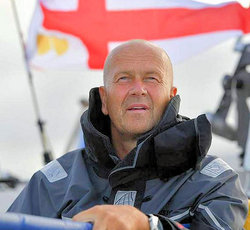
.jpg) A known bug with the Apple version of the digital QST app may prevent some users from downloading issues of the magazine. ARRL has confirmed with the developer that version 5.0 of the app, introduced in early February, may produce instances where the app crashes on some devices when the user tries to download an issue of QST for offline reading. We apologize for this inconvenience, and we are working with the developer to resolve this issue as quickly as possible.
A known bug with the Apple version of the digital QST app may prevent some users from downloading issues of the magazine. ARRL has confirmed with the developer that version 5.0 of the app, introduced in early February, may produce instances where the app crashes on some devices when the user tries to download an issue of QST for offline reading. We apologize for this inconvenience, and we are working with the developer to resolve this issue as quickly as possible. Purchases via AmazonSmile pay dividends to ARRL. Those who use Amazon for online purchases can automatically donate to ARRL by opting to use
Purchases via AmazonSmile pay dividends to ARRL. Those who use Amazon for online purchases can automatically donate to ARRL by opting to use 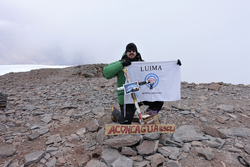 Tom Rudzinski, SQ9FVE, made Summits on the Air (
Tom Rudzinski, SQ9FVE, made Summits on the Air (







